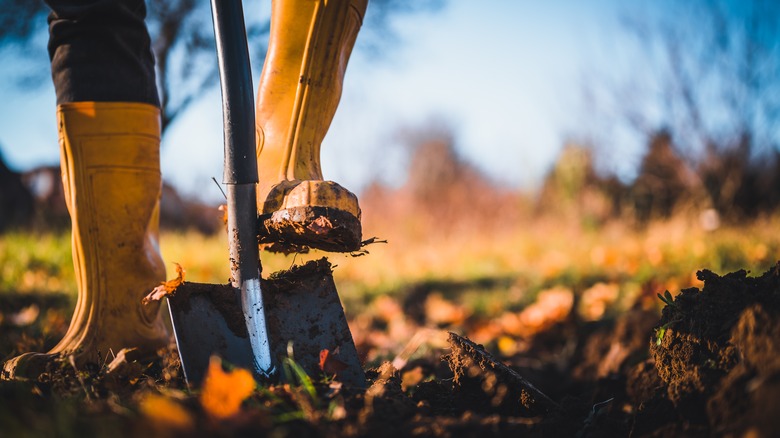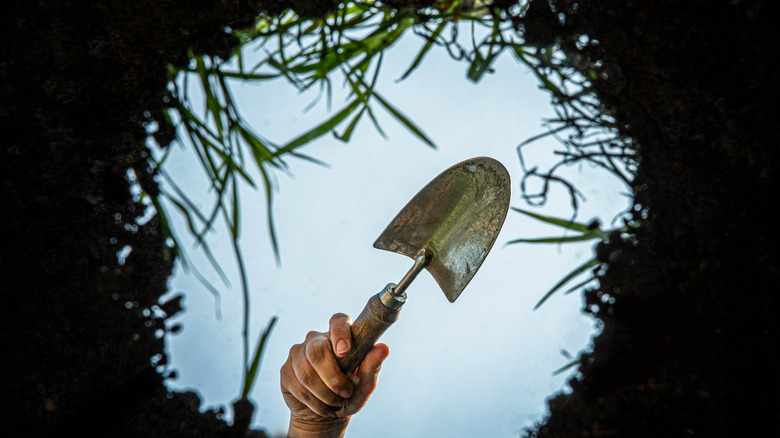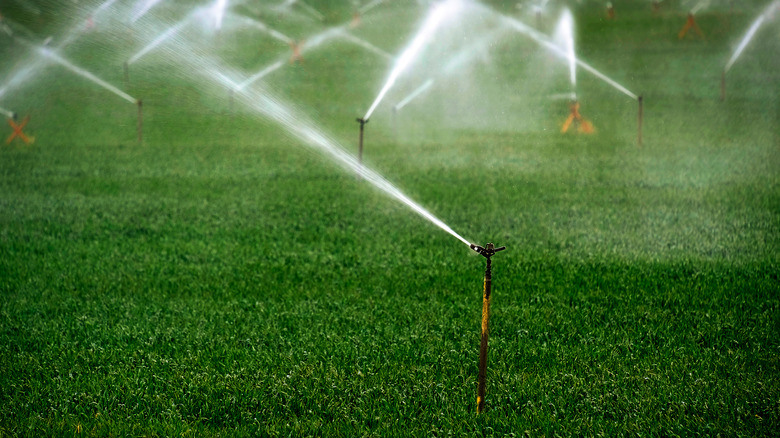You'll Need A Shovel To Check If Your Lawn Is Getting Enough Water
There are many factors that contribute to having a healthy, green lawn: the species of grass planted matters, how rich the soil is, and whether or not you use an adequate amount of fertilizer is also important. However, one of the most crucial elements that promote lush grass is water. How often you water your lawn is vital to its growth which is why most homeowners would rather not leave it to chance. Depending on rainwater alone can be an unstable relationship, so we typically use irrigation systems like sprinklers to get the job done. Nevertheless, even with multiple water sources, your lawn could be dying of thirst if it's not getting an appropriate amount. To check if your yard is getting enough water, all you need to do is go into your shed and get your shovel.
Underwatering your lawn is almost as catastrophic as overwatering it. When your grass isn't getting its weekly moisture requirement of around an inch of water, it can lead to problems like fungal growth, dry soil, stunted grass growth, and the blades of grass take on a blue-gray hue. If you notice these symptoms in your yard and you aren't sure if your soil is getting enough water, then a quick shovel trick will tell you all you need to know.
Use the shovel to measure root depth
Lawns typically need about an inch of water weekly in order to look and feel their best, but this amount may differ depending on the climate conditions in your region. If you live in a dry zone with little rainfall, your yard might be more thirsty than someone living in a more humid region. Either way, it's best to be sure how much water retention your soil has, and that means you'll have to do some digging ... literally.
Making a small hole in your grass can help you measure your soil moisture. Grab your shovel and dig into the ground, shifting the soil a bit so you can peer into the hole. Note the grass roots. If they haven't grown past 3 inches into the ground, then it means that not enough water is penetrating the soil. This could mean that you're not watering enough or that your soil is compacted, preventing the water from going deep enough to promote healthy roots. In the case of compacted soil, aerating the affected area will solve the issue.
Check if your irrigation system is distributing water equally in the yard
Tuning into your grass when it's telling you it needs water will make a huge difference. If you find out that your lawn lacks enough moisture, then there are a couple of ways that you can amp up your watering game.
First, make sure that your irrigation system is uniformly spreading the water. Some parts of your yard might be receiving too much sunlight, which causes the water to evaporate there quicker, or your sprinkler might not be allocating enough water to that area. To check, place matching containers all around your yard with an even spacing of at least 10 feet apart, and then turn on your sprinkler. After a few minutes, turn the sprinkler off and note how much water is in each container. If some containers have less water than the rest, those areas may be lacking enough water.
Watering your lawn for longer but less frequently will help promote deep root growth and make your lawn look and feel better. Dial back the daily irrigation to twice a week and three times during the summer for a healthier-looking yard.


